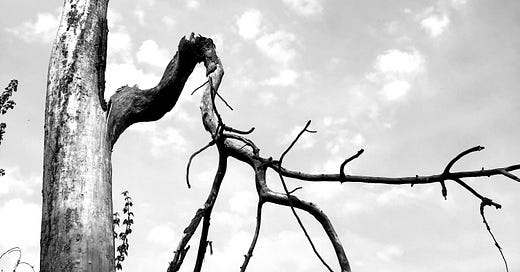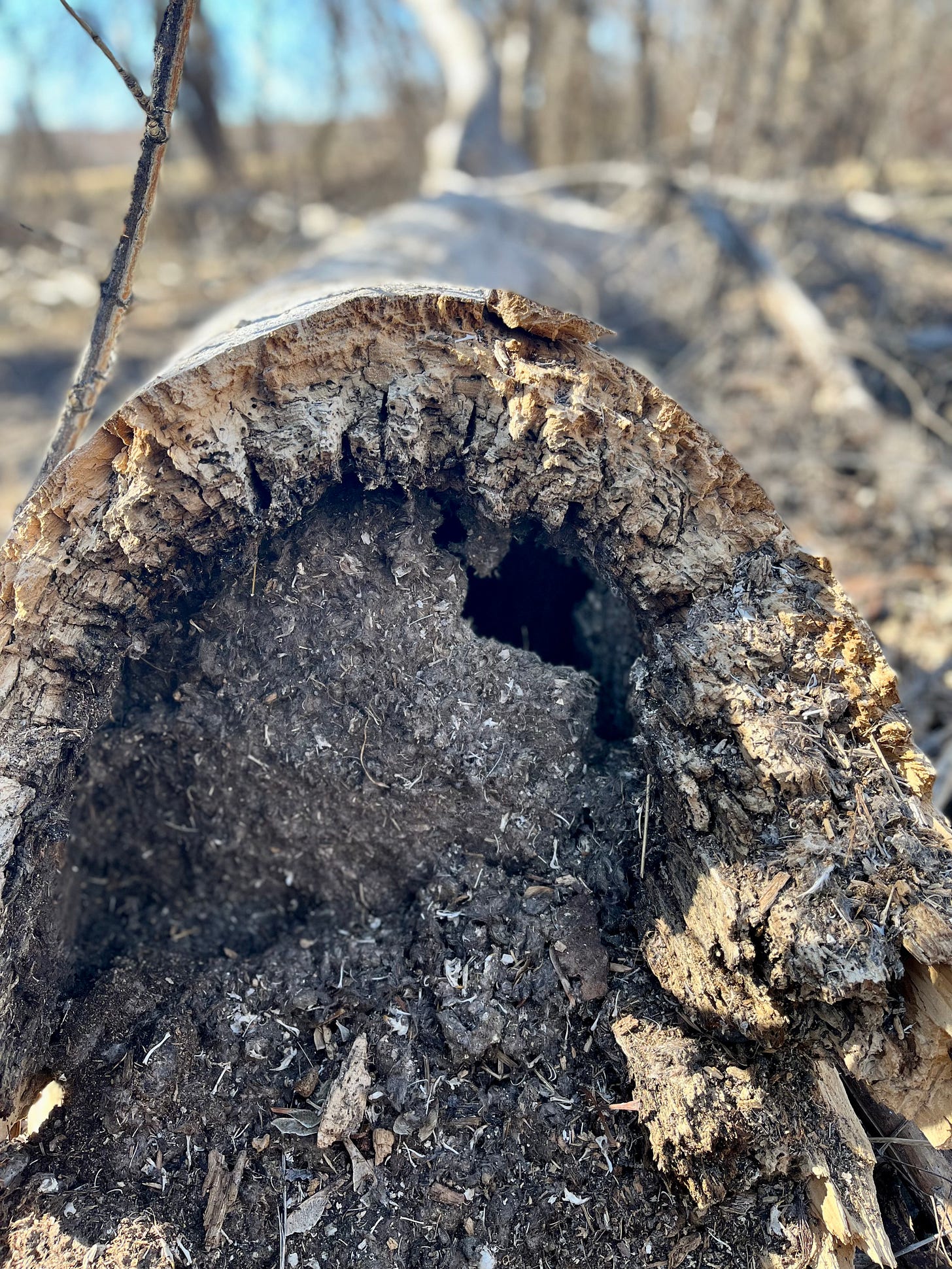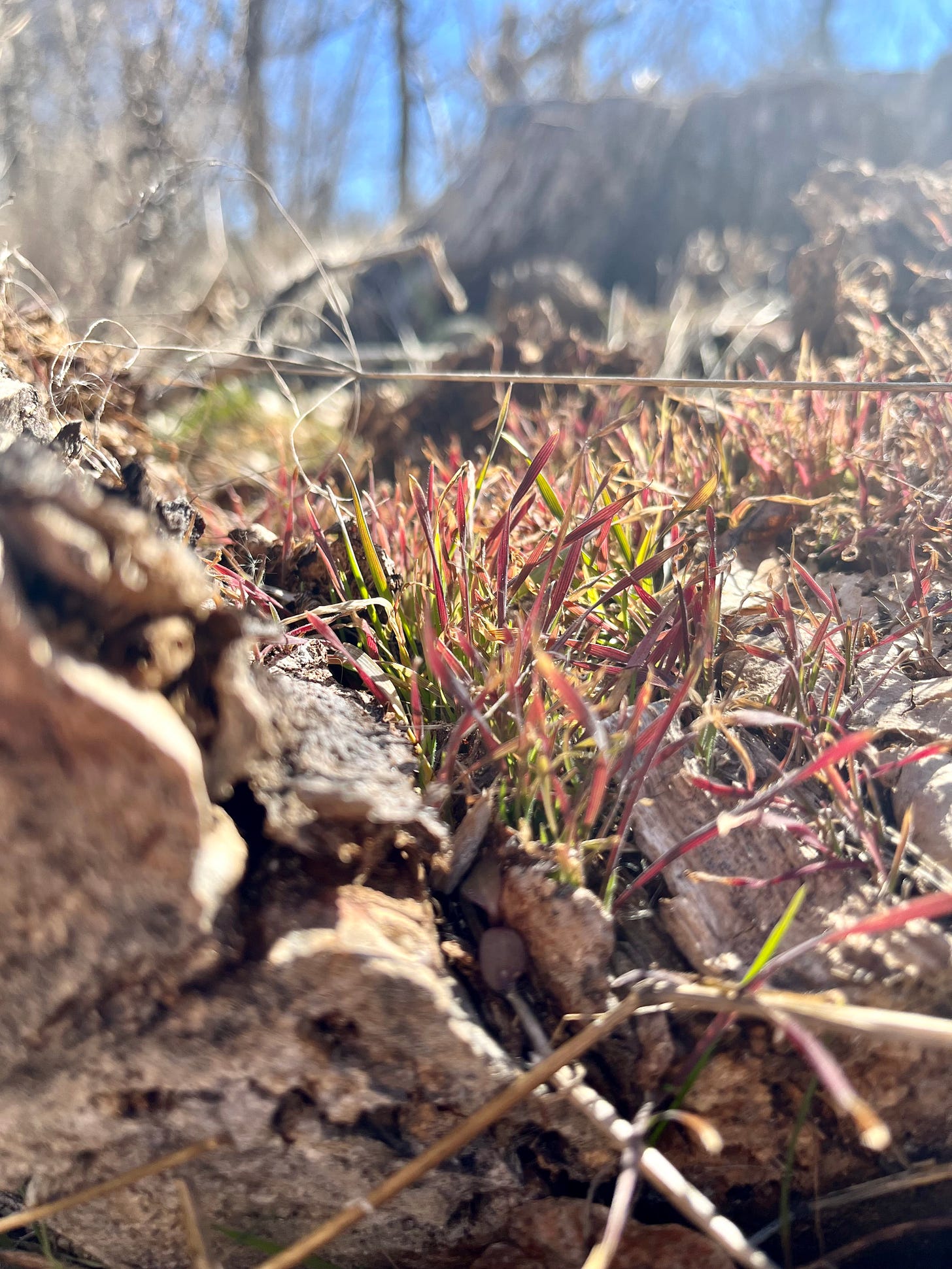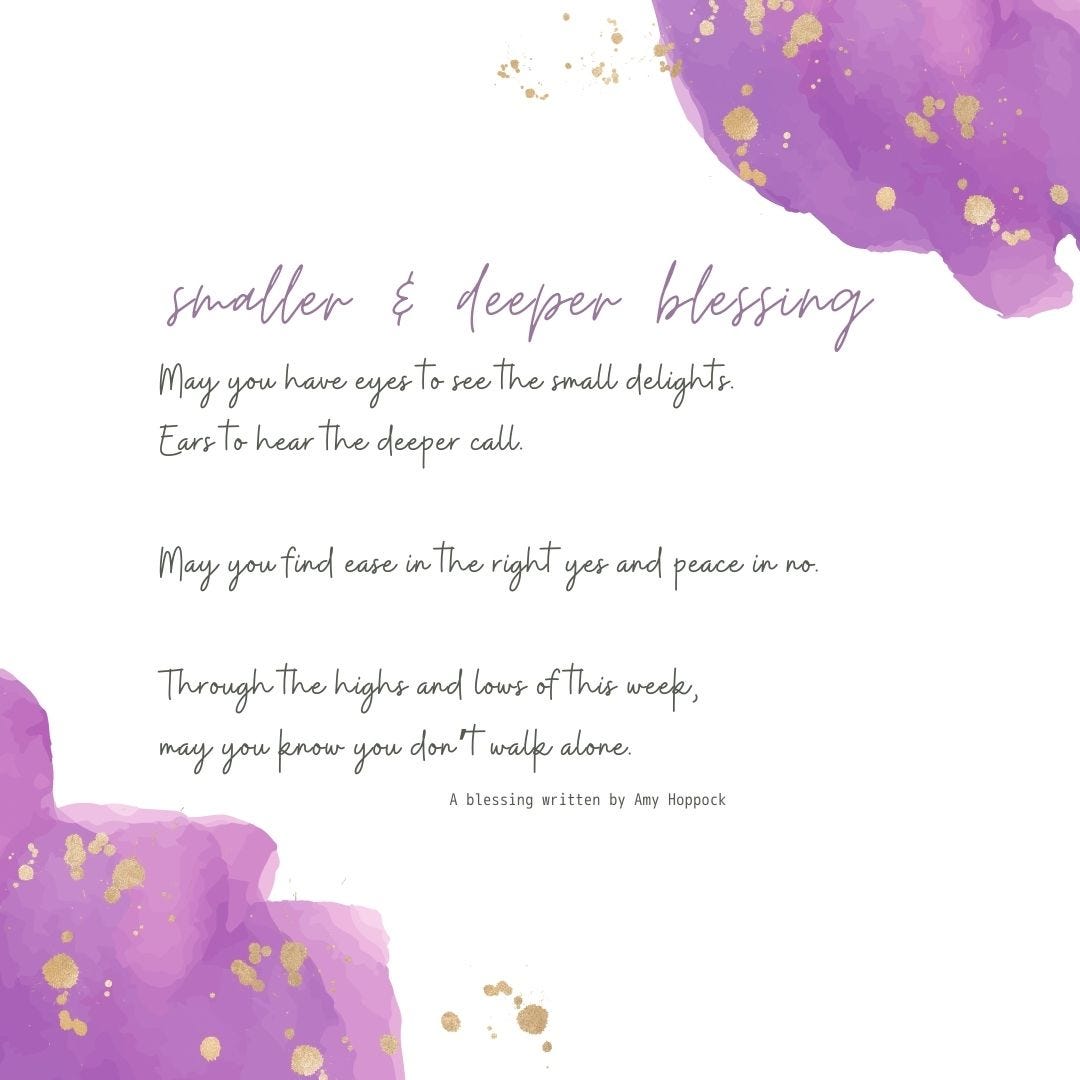The path that winds along Dry Creek is finally starting to dry. It's a relatively short path about half a mile from the road to the bridge. The south side has been open for a few weeks. The north side is still a bit muddy but passable. On my first walk down the path this season I was surprised to learn that a winter windstorm caused a distinctive tree along the path to come crashing down.
I guess I probably knew that the tree would fall down someday. But it has been there so long with its distinctive L shape I just assumed it would always be there. While I knew it wasn't living, it was still beautiful. When I saw it had crashed down and broken into several large sections, the state of its core, which was now exposed saddened me.
Heart rot is the name when a tree rots from the inside out. At one point in its history, there was a wound, and a tiny fungus spore landed and slowly, so slowly started growing. Healthy trees compartmentalize the fungus, sealing it off from the rest of the tree. For some reason, this tree didn't catch it in time, the mechanism didn't work, and it was destroyed from the inside out slowly over years and years, the heartwood rotted. (Heartwood is the center, less permeable, more durable core of the tree. The growth outside of the heartwood is the sapwood. Heartwood is also the wood used to make furniture, floors, and roofs.)
Smaller and deeper living invites us to notice small moments, sites, feelings, and impressions and pause and look deeper. When I got close to the tree and saw the tree's core spilling out like soil, I paused. It took my breath away. I found myself pulling out my camera and looking for how to capture the beauty in the destruction, in the death, in the heart rot.
"Photography as a spiritual practice combines the active art of image-receiving with the contemplative nature and open-heartedness of prayer. It cultivates what I call sacred seeing or seeing with the 'eyes of the heart' (Ephesians 1:18). This kind of seeing is our ability to receive the world around us at a deeper level than surface realities."
-Christine Valters Paintner
Visio Divina is the practice of using our eyes to take note of something small and offers us tools to dig deeper.
I'm sharing a few pictures from my pre-spring walk along Dry Creek yesterday. The tree with heart rot, an old stump with grass shoots starting to grow and tucked into the core (heart) of another stump, a green plant beginning to grow, and the first patch of green grass I've seen along the south banks of Dry Creek.
Visio Divina: A Practice
Notice what picture catches your attention.
Take five or six slow breaths; look carefully at the picture, top to bottom, left to right, front to back.
Sit with the photo for a few minutes and slowly ask yourself the following questions.
What emotions does the picture stir up in you?
Where would you be in the picture if you could place yourself in it?
What is speaking to you from this image?
How would you title this picture?
Does this picture stir a longing or a hope within you?
Do you feel an invitation to write a poem, a haiku, a reflection, does it bring to mind a song?
A blessing for seeing:
May your eyes be wide-open to find beauty in unexpected places. May your eyes and heart be aligned to pause before images and ideas that invite you deeper. May the world around you be a teacher and a guide as you walk slowly with your heart and eyes open.
(I LOVE this sweet song about heartwood)
Take a picture this week as a spiritual practice. Let whatever the image you capture be an inspiration for an “open-hearted prayer” as quoted above by -Christine Valters Paintner
Look for other pictures this week that give you pause and practice Visio Divina.
I started a new newsletter last week! If you missed it you can read more here.
If you would like to follow along you can sign up here I’m sending out thoughts and learnings about Collect writing on Monday & Thursday evenings during this Lenten season.
I try to pay attention to words or phrases that stand out in my reading and listening. There is a spiritual practice called Florliledgium that collects short, interesting pieces {words that “sparkle” up} and puts them together. This is kind of like that. Watching for things that sparkle. Gathering them and seeing how they work together and what message, mantra, or new idea might arise.)
A Practice:
Read slowly.
Notice if a word or phrase stands out to you.
How do the words make you feel?
Is there an invitation?
(I’m sharing in italics the lines that stand out to me in these passages. Maybe it’s the same, or maybe it’s different, there is much food for thought in each of these passages)
“Invite Wonder: What if you bowed before every dandelion you met and wrote love letters to squirrels and pigeons who crossed your path? What if scrubbing the dishes became an act of single reverence for the gift of being washed clean, and what if the rhythmic percussion of chopping carrots became the drumbeat of your dance? What if you stepped into the shower each morning only to be baptized anew and sent forth to serve the grocery bagger, the bank teller, and the bus driver through simple kindness? And what if the things that make your heart dizzy with delight were no longer stuffed into the basement of your being and allowed out to play in the lush and green fields? There are two ways to live in this world: As if everything were enchanted or nothing at all.”
― Christine Valters Paintner, The Soul of a Pilgrim: Eight Practices for the Journey Within
“Every night before I go to sleep I say out loud three things that I am grateful for, all the significant, insignificant, extraordinary, ordinary stuff of my life. It is s small practice and humble, and yet, I find I sleep better holding what lightens and softens my life every so briefly at the end of the day.”
― Carrie Newcomer, A Permeable Life: Poems & Essays
“Progress, not perfection, is what we should be asking of ourselves.”
― Julia Cameron, The Artist's Way: A Spiritual Path to Higher Creativity
“I need to be silent for a while, worlds are forming in my heart.”
― Meister Eckhart














